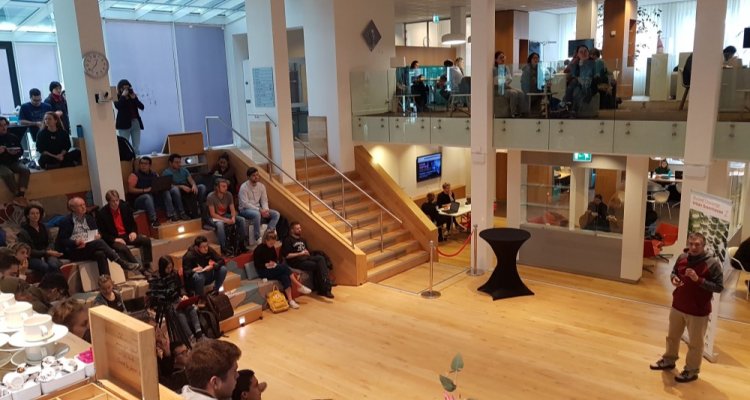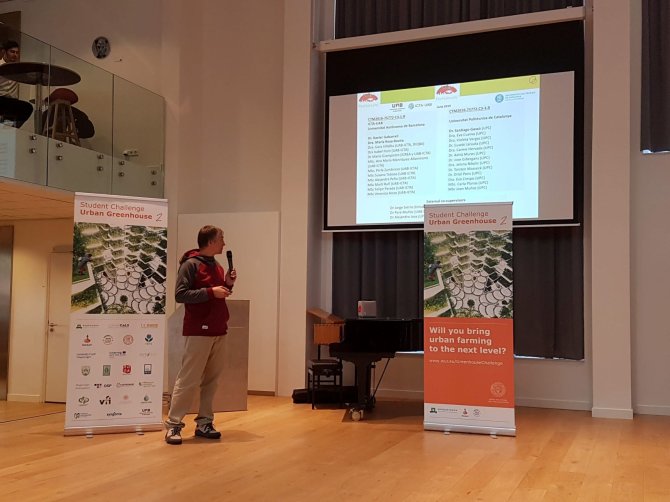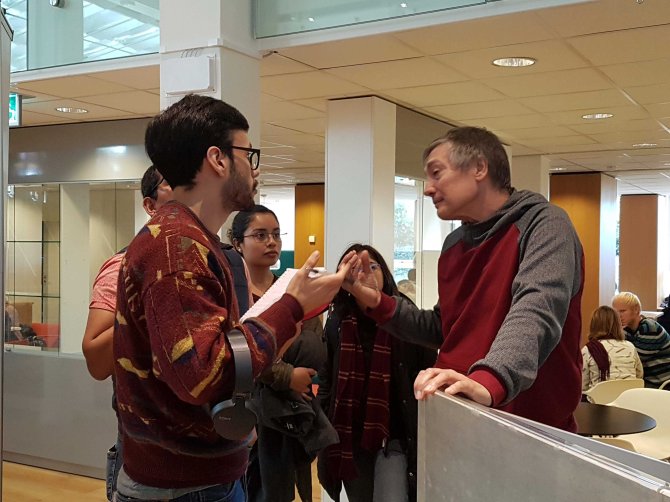
Nieuws
Future of Urban Farming Series: Discovering the potential of integrated greenhouses
On the 6 November the first lecture of the Future of Urban Farming Series took place. This is part of the Urban Greenhouse Challenge in collaboration with GROOF project. Dr. Xavier Gabarrell Durany from the Universitat Autònoma de Barcelona visited the Wageningen University Campus to talk about the Fertilecity project.
The Fertilecity project
The Fertilecity project analyses the opportunities for the integration of greenhouses on the rooftops of buildings. The lecture attracted teams participating in the Urban Greenhouse Challenge as well as students and WUR staff generally interested in urban farming.
The aim of the Fertilecity project is to close all the loops within the building, which implies a symbiosis of the flows of energy, water and CO2 emissions. All in all, this aim is part of the overarching goal of achieving urban food security within a circular economy.

Urban agriculture: an interdisciplinary field
As Dr. Gabarell Durany noted, the field of urban agriculture is interdisciplinary. Consequently, many researchers from Universitat Autònoma de Barcelona and from the Technical University of Catalonia with different fields of expertise are working on the Fertilecity project. The team consists of energy engineers, architects, agronomists, sociologists, and business experts amongst others. This also reflects a crucial part of the challenge for the students participating in the Urban Greenhouse Challenge: the participating teams need to be interdisciplinary in order to be able to take into account all the aspects of designing an urban greenhouse. From the construction of the building, the food production system, the business model, and the social impact: everything needs to be thought out.
Urban rooftop farming
Within the rooftop greenhouse of the Fertilecity project, experiments are conducted with beans, tomatoes, and lettuce amongst others. For instance, from 2015 to 2018, the project team worked on gaining insight into what the best combination of crops to grow in a rooftop greenhouse during the year is in order to arrive at the optimal environmental and economic circumstances. Of the scenarios that were experimented with, it appeared that the best scenario is to grow tomatoes from January to August and to combine this with growing smaller crops like lettuce and beans during the rest of the year.
Growing crops in rooftop greenhouses: limitations and advantages
One of the limitations of growing crops in greenhouses on rooftops is the weight that is associated with this activity. In order to cope with this, the Fertilecity project is employing a soilless system, which encompasses that plants are grown without the use of soil as a rooting medium and that inorganic nutrients absorbed by the roots are supplied via irrigation water. The building uses solely rainwater and has two tanks: one that is used for services within the building itself, and one that is used for the greenhouse on top of the building.
In comparison to conventional greenhouses, the Fertilecity rooftop greenhouse has several advantages. Namely, temperatures in conventional greenhouses can be quite extreme for crop production, according to the season. In contrast, the temperatures within Fertilecity rooftop greenhouse can be stabilized through the use of the residual heat or residual cold that is generated by the building, which would otherwise escape to the atmosphere.

Key message
As a final wrap-up, Xavier Gabarell Durany noted that the Fertilecity project is not only about integrating the greenhouse within the building, but also about improving sustainability and obtaining economic profit. This is a useful take-away for the student teams participating in the Urban Greenhouse Challenge!